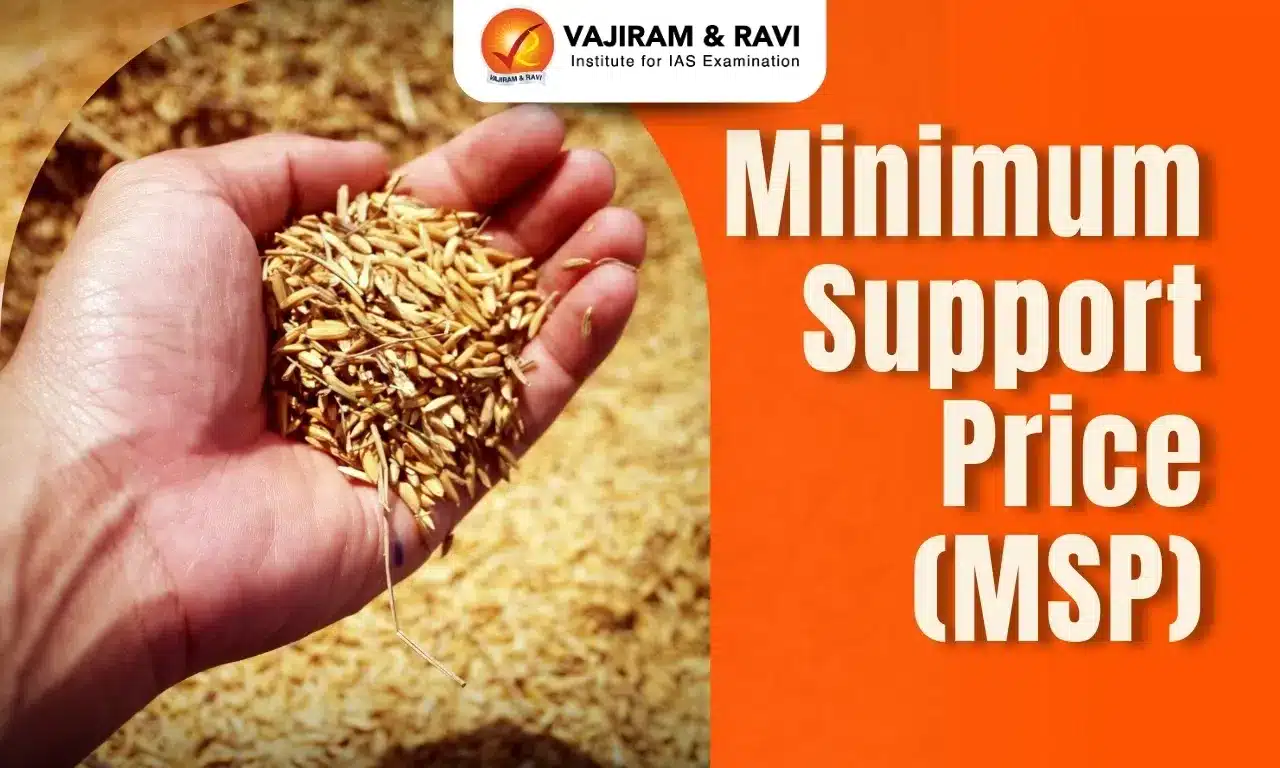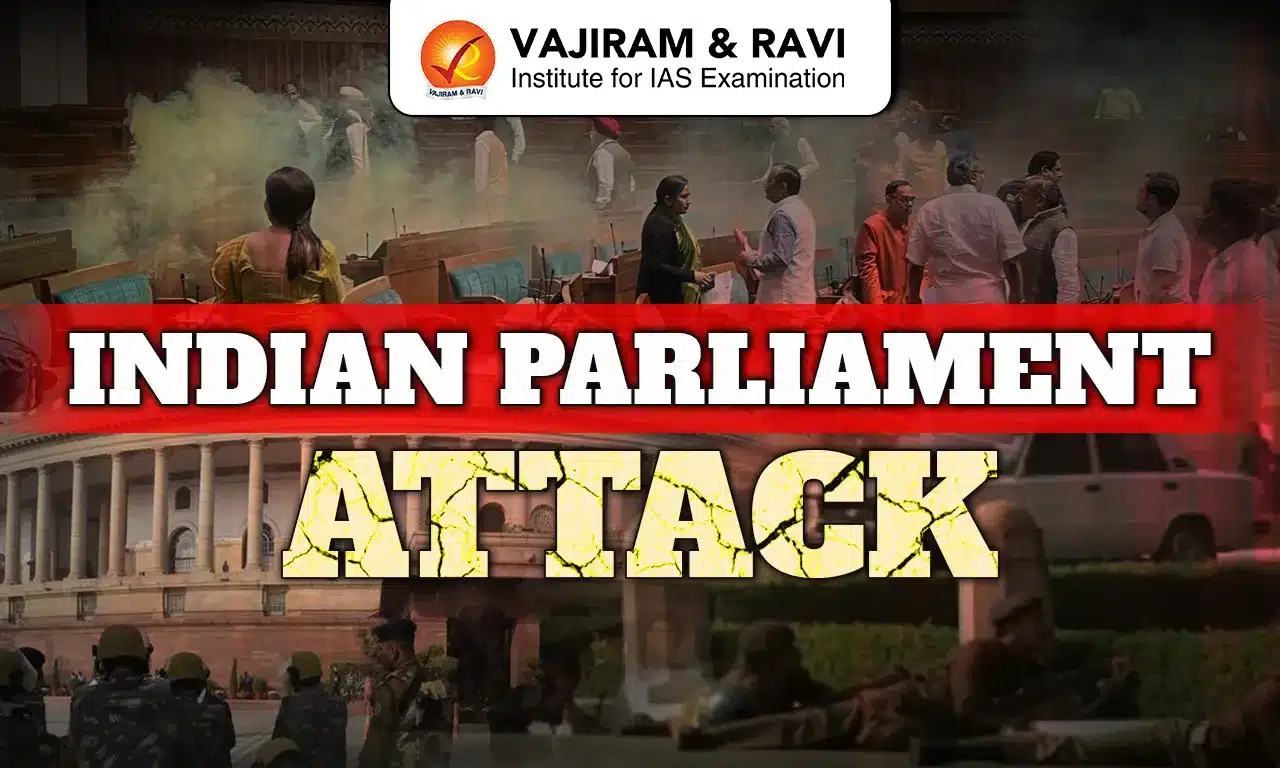The Minimum Support Price (MSP) is a market intervention scheme where the government sets a predetermined price for 22 crops. If market prices drop below the MSP, the government steps in to purchase the crops. This ensures that farmers receive a guaranteed price, protecting them from market fluctuations and ensuring financial stability. Keep reading the article to know the details of MSP, the List of Crops Covered Under MSP and many more.
Minimum Support Price (MSP)
The Minimum Support Price (MSP) is the minimum price set by the government to ensure farmers receive fair value for their crops, even when market prices fall. This concept was introduced in 1966-67 during the Green Revolution as part of agricultural reforms, MSP serves as a safety measure taken by the union government to protect farmers from financial losses and maintain food security.
The Indian government announces MSP twice a year, before the Kharif (monsoon) and Rabi (winter) sowing seasons. The Commission for Agricultural Costs and Prices (CACP) recommends the MSP, which is then approved by the Cabinet Committee on Economic Affairs (CCEA). This system encourages farmers to grow essential crops while ensuring financial stability.
List of Crops Covered Under MSP
The government sets the Minimum Support Price (MSP) for 22 crops to provide financial support to farmers. This includes 14 Kharif crops, 6 Rabi crops, and 2 commercial crops. MSP is also determined for Toria and de-husked coconut, based on the MSPs of rapeseed & mustard and copra. The MSP is revised annually by the government, considering the existing economic and agricultural conditions to ensure fair price for the crop to the farmers.
Kharif Crops
- Paddy
- Jowar
- Bajra
- Ragi
- Maize
- Tur (Arhar)
- Moong
- Urad
- Groundnut
- Sunflower Seed
- Soyabean (Yellow)
- Sesamum
- Nigerseed
- Cotton
Rabi Crops
- Wheat
- Barley
- Gram
- Masur (Lentil)
- Rapeseed & Mustard
- Safflower
Commercial Crops
- Copra
- Jute
Steps to Determine Minimum Support Price
The Commission for Agricultural Costs and Prices (CACP) recommends the Minimum Support Price (MSP) based on various factors, ensuring fair prices for crops to farmers. Before announcing the MSP, the government considers:
- Cost of Production: The primary factor includes expenses on seeds, fertilizers, irrigation, and labour. Farmers are assured a minimum margin of 50% over the production cost.
- Demand and Supply: The government analyzes market trends and consumer demand to determine appropriate pricing.
- Market Price Trends: Domestic and international price comparisons ensure that the MSP remains competitive.
- Inter-Crop Price Parity: A balanced pricing structure across different crops encourages diversified farming.
- Terms of Trade: The government assesses the relationship between agricultural and non-agricultural sectors to maintain fair trade conditions.
Other Considerations
- Changes in Input Prices
- Input-Output Price Parity
- Industrial Cost Structure
- Cost of Living
- Impact on Subsidies
- Farmer’s Income Parity
The government uses the A2+FL formula to calculate MSP, which includes:
- A2: Actual paid-out costs incurred by the farmer.
- FL: The imputed value of family labour.
Minimum Support Price Needs
The Minimum Support Price (MSP) is a minimum price set by the government of India for Indian agriculture, offering stability, security, and motivation for farmers to sustain crop production. The below mentioned are the needs for the Minimum Support Price:
- It guarantees a minimum income for farmers, protecting them from financial losses.
- By providing assured prices, it motivates farmers to grow more staple crops, contributing to food security.
- MSP acts as a buffer against price fluctuations, especially during harvest season.
- A strong agricultural sector, backed by MSP, uplifts rural livelihoods and strengthens the economy.
- Farmers are protected from being forced to sell their produce at unfair prices by traders.
Latest Minimum Support Price 2025-26
According to the Directorate of Economics and Statistics, Ministry of Agriculture and Farmers Welfare, according to the latest Minimum Support Price (MSP) applicable for the 2025-26 is as follows (as of 22 January 2025):
|
Latest Minimum Support Price 2025-26 |
||||
|
Commodity |
Variety |
2023-24 |
2024-25 |
Increase in MSP (2024-25 over 2023-24) |
|
Kharif Crops |
||||
|
Paddy |
Common |
2183 |
2300 |
117 (5.4%) |
|
|
Grade ‘A’ |
2203 |
2320 |
117 (5.3%) |
|
Jowar |
Hybrid |
3180 |
3371 |
191 (6.0%) |
|
|
Maldandi |
3225 |
3421 |
196 (6.1%) |
|
Bajra |
|
2500 |
2625 |
125 (5.0%) |
|
Ragi |
|
3846 |
4290 |
444 (11.5%) |
|
Maize |
|
2090 |
2225 |
135 (6.5%) |
|
Tur (Arhar) |
|
7000 |
7550 |
550 (7.9%) |
|
Moong |
|
8558 |
8682 |
124 (1.4%) |
|
Urad |
|
6950 |
7400 |
450 (6.5%) |
|
Groundnut |
|
6377 |
6783 |
406 (6.4%) |
|
Sunflower Seed |
|
6760 |
7280 |
520 (7.7%) |
|
Soyabeen (Yellow) |
|
4600 |
4892 |
292 (6.3%) |
|
Sesamum |
|
8635 |
9267 |
632 (7.3%) |
|
Nigerseed |
|
7734 |
8717 |
983 (12.7%) |
|
Cotton |
Medium Staple |
6620 |
7121 |
501 (7.6%) |
|
|
Long Staple |
7020 |
7521 |
501 (7.1%) |
|
Rabi Crops |
||||
|
Wheat |
|
2275 |
2425 |
150 (6.6%) |
|
Barley |
|
1850 |
1980 |
130 (7.0%) |
|
Gram |
|
5440 |
5650 |
210 (3.9%) |
|
Masur (Lentil) |
|
6425 |
6700 |
275 (4.3%) |
|
Rapeseed & Mustard |
|
5650 |
5950 |
300 (5.3%) |
|
Safflower |
|
5800 |
5940 |
140 (2.4%) |
|
Toria |
|
5650 |
5950 |
300 (5.3%) |
|
Commercial Crops |
||||
|
Copra |
Milling |
10860 |
11160 |
300 (2.8%) |
|
|
Ball |
11750 |
12000 |
250 (2.1%) |
|
De-Husked Coconut |
|
2930 |
3013 |
83 (2.8%) |
|
Jute |
|
5050 |
5335 |
285 (5.6%) |
Last updated on December, 2025
→ Check out the latest UPSC Syllabus 2026 here.
→ Join Vajiram & Ravi’s Interview Guidance Programme for expert help to crack your final UPSC stage.
→ UPSC Mains Result 2025 is now out.
→ UPSC Notification 2026 is scheduled to be released on January 14, 2026.
→ UPSC Calendar 2026 is released on 15th May, 2025.
→ The UPSC Vacancy 2025 were released 1129, out of which 979 were for UPSC CSE and remaining 150 are for UPSC IFoS.
→ UPSC Prelims 2026 will be conducted on 24th May, 2026 & UPSC Mains 2026 will be conducted on 21st August 2026.
→ The UPSC Selection Process is of 3 stages-Prelims, Mains and Interview.
→ UPSC Result 2024 is released with latest UPSC Marksheet 2024. Check Now!
→ UPSC Prelims Result 2025 is out now for the CSE held on 25 May 2025.
→ UPSC Toppers List 2024 is released now. Shakti Dubey is UPSC AIR 1 2024 Topper.
→ UPSC Prelims Question Paper 2025 and Unofficial Prelims Answer Key 2025 are available now.
→ UPSC Mains Question Paper 2025 is out for Essay, GS 1, 2, 3 & GS 4.
→ UPSC Mains Indian Language Question Paper 2025 is now out.
→ UPSC Mains Optional Question Paper 2025 is now out.
→ Also check Best IAS Coaching in Delhi
Minimum Support Price FAQs
Q1. What is meant by minimum support price?+
Q2. What is the minimum price class 9?+
Q3. What is state minimum support price?+
Q4. Who introduced MSP in India?+
Q5. What is the purpose of MSP?+

















